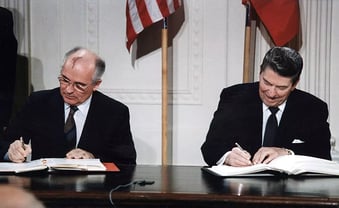Trust and teamwork are in a crisis if you ask managers. If you are a knowledge worker, you are working remotely post COVID spring of 2020; whether you want to or not. Everyone has become intimately familiar with remote communication and collaboration – instant messaging, simultaneous editing, and gawking at your colleagues' bookshelves in video calls – the most used tools being Slack, Zoom, Microsoft Teams, and Google's G Suite. And Sharepoint for some, you poor souls.
There was a tug-of-war between office cultures permitting remote work and ones where it was synonymous with, if not slacking off, then taking a little downtime. The war is over. The remote workers won. But managers remain suspicious and there is a lack of trust.
Big brother is out there
One remedy to the mistrust has been surveillance technology i.e. personnel tracking. Employees have been tracked or monitored since the start of the industrial revolution, so we take it for granted in offices. Employers can legally monitor almost anything an employee does at work as long as the reason for monitoring is important enough to the business. At the office, video surveillance is a common method used by employers to monitor employee workstations. Now with remote working becoming a mandatory norm, managers are worried that they can't measure their employees anymore. This has led to surge of tools which deterriorate trust.
The MIT Technology Review reviewed some of the snooping software for managers:
“Hubstaff is software that records users’ keyboard strokes, mouse movements, and the websites that they visit. Time Doctor goes further, taking videos of users’ screens. It can also take a picture via webcam every 10 minutes to check that employees are at their computer.”
Tommy Weir, CEO of Enaible... thinks most tools on the market don’t go far enough. “Imagine you’re managing somebody and you could stand and watch them all day long, and give them recommendations on how to do their job better,” says Weir. “That's what we’re trying to do. That’s what we’ve built.”
Needless to say, if you have a choice, you are not touching oppressive companies that have those sinister systems in place with a 10-foot-pole. And talented star employees usually have a choice. The ones who don't, are junior and low wage workers, and by measuring them like lab rats, you're sending a clear dehumanizing message to your most vulnerable team members. Teams that know how to collaborate outperform teams that rely on stars in the long run. Not to mention that singling out stars and rats is proven to demotivate everyone.
These are not factory workers producing widgets, but knowledge workers sitting at their laptops, so why do we want to use the same Tayloristic metrics?

Frederick W. Taylor believed managers should have full control of how people work and his philosophy has permeated management theory for over 100 years. As Gartner puts it, time-motion studies, metrics, and removing people from the puzzle are some of his contributions which created the hazardous belief system called efficiency thinking.
Efficiency thinking is a key factor in the productivity myth, where a unit of input adds a unit of output. More minutes at your desk equals more office work done. This is what Paul Krugman would call a "zombie idea", an idea that has been dead for a long time but we still keep it around and feed it brains. Software developers and creative designers alike fill out timesheets every week with hours that only faintly resemble the actual time spent. Clients don't mind either as long as the work gets done. We need downtime throughout the day. Our most productive work takes up a fraction of the workday. And in startups, incrementally increasing efficiency is detrimental to thinking laterally, outside the box, which is what agile companies require to outcompete and outgrow the market.
Trust but verify
According to HBR, the best yardstick for innovation and productivity in an agile company is the collaboration that happens between teams. The way of working in an organization should both allow for continuous collaboration but also time for people to focus on their deep work. A balancing act of both spending time with people in meetings and workshops and working on your thoughts, ideas, and deliverables. Remote working can create the illusion that it is more important to be seen than to be productive and people pick up on this quickly.

So what should managers do then? Trust is essential. Managers have to trust their employees and teams more but they also have to have the proper metrics in place that they comprehend whether information is flowing in the company to avoid organizational silos. "Trust but verify" ("Доверяй, но проверяй") was a proverb used in the Cold War about nuclear disarmament between the US and the Soviet Union, but it could be used for more mundane collaboration as well.
People and their interactions with each other are the biggest challenge to remote work according to a Fortune/Adobe survey, much more than hardware or tech tools. More often than not, problems arise from people feeling they 1. have no agency, 2. don't feel trusted, or 3. are overworked. This is especially critical for startups and growth companies when critical people leave due to frustration.
Ways for managers to Build trust and improve collaboration in remote teams
 The ingredients to successful collaboration revolve around getting a chain reaction ignited between people, trust, and the flow of information.
The ingredients to successful collaboration revolve around getting a chain reaction ignited between people, trust, and the flow of information.
- Transparency. Making sure data is accessible and knowledge is readily shareable. Being the person everyone comes to for information get dreary fast.
- Empowerment. Make it clear when feedback is a performance assessment versus cultivation of new capabilities and skills. Don't micromanage like Enaible's Mr. Weir.
- Inclusivity (preferably with a diverse team). It's a risk to always rely on the same people for input on your projects. Diversity of thought makes teams more resilient and versatile. This does require a foundation of psychological safety in the organization and understanding the meta-level of communication.
- Tools. The right collaboration software for the right purpose. Many problems arise from excessive emailing. Then again, sometimes a phone call does the trick much better than an instant message.
- Measuring the right things. Employees prioritize what they are measured against, so you should have a clear understanding of what their KPIs are and offer them a dynamic visualization of their performance. Don't track keystrokes or if people have a tab open on Facebook.
If the topic interests you, we have built a non-invasice solution at Flowtrace that is based on understanding team collaboration and knowledge sharing; finding out what is truly damming the flow in organizations. We provide tools for individual employees to understand their workday, to stay focused, and get deep work done. On top of this, we have an aggregated view to teams, functions, and company level to understand how you can build trust, and information flows across your teams.
